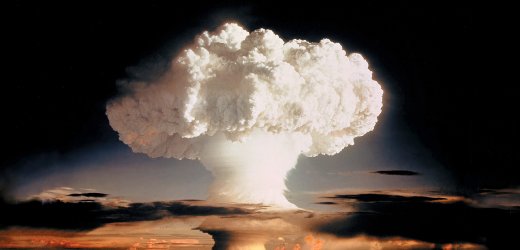Was I asleep during the lesson on post-trauma growth, or what?
I’ve been traveling through this healing process armed with a load of information on post-traumatic stress disorder. I have done my homework for LifeStar and I’ve added additional work for my individual therapy. I’ve had a laser-like focus on kicking betrayal trauma in the butt and not letting the sinful behaviors of one individual, my husband, destroy who I am. Honestly, if I hadn’t worked so hard, I would have ended up in a mental ward somewhere because I was a big terrible mess. No exaggeration. The sudden discovery that I had been deceived for thirty-seven years hit me like a nuclear bomb. It’s been two years and there’s still some fallout from that nuclear mushroom cloud.

Maybe my focus was too narrow. I don’t know. There were many times that I read how people were blessed and found even greater happiness after trauma. I had faith that what I read was true, but it all seemed so subjective. At times, I thought the promises of a better life were reserved only for the recovering addict. After all, he was finally free from the prison of his secrets. It seemed absolutely possible that his life would be much better after finding recovery.
I, on the other hand, thought my life before the nuclear bomb was pretty awesome. So, maybe the promise of a better tomorrow, for me, meant that I would finally live with more clarity and a better understanding of who my husband really is. I would finally live without his emotional brick wall that so often separated us.
In the end, it didn’t matter. Regardless of the potential for “better tomorrows” or an “improved and better marital relationship,” I just marched forward on my focus of becoming healed and whole again. Post-trauma life seemed like a far-away land that existed in some faint dream. I operated on pure faith that my post-trauma life would be worth the work I was doing. I operated on faith because I didn’t have enough concrete evidence to do anything else.
So, what the heck? There IS concrete evidence, folks! There’s actual scientific research on post-traumatic growth or PTG. Hey, if it has its own acronym, you know its legit! Maybe the dark fog of trauma caused me to ignore this stuff. For whatever reason, as I begin to step into a post-trauma life (I like to call it “the after-life”), I’m now bumping into all kinds of verifiable and credible research on the subject of PTG.
For all of you that are still trying to find your way out of the dark hole of trauma, the hope for a better after-trauma life is real. Keep clawing your way out, because the light and sunshine ahead can actually be brighter than you’ve known before. You have to walk through a sometimes fiery path to healing before you will understand how this can even be possible, but it’s true. I’m beginning to see a new brightness of hope and joy. And . . . studies give some proof that this is possible. Check out Google Scholar for the research like this one from Jenna Van Slyke, M. S.
Although traumatic experiences can sometimes result in severe psychological distress, they can also result in positive psychological changes as a result of the trauma survivors’ struggle with the trauma. Also known as post-traumatic growth (PTG), these positive changes may include the development of new perspectives and personal growth. Current studies have shown that 30% to 90% of people report some positive changes following trauma.
. . . One of the better known scales, the Post-traumatic Growth Inventory (PTGI), measures five broad domains that comprise a significant amount of the variance in PTG: a greater appreciation of life, closer relationships, identification of new possibilities, increased personal strength, and positive spiritual change. Greater appreciation of life following a traumatic event can be represented by a shift in priorities and taking pleasure in aspects of life that were once taken for granted. Trauma survivors may also experience increased compassion and empathy for others, which allow them to cultivate deeper and more meaningful relationships. Identification of new possibilities and increased personal strength can also be seen in trauma survivors who display high levels of PTG. For example, an individual may display higher levels of self-efficacy or a stronger belief in his or her ability to overcome obstacles. The same individual may experience a change in values post-trauma and find that he or she is able to identify a more fulfilling path for the future. Finally, trauma survivors may also experience a positive change in spirituality, perceiving themselves as being more capable of connecting with something greater than themselves (God, the universe, nature, etc.), regardless of religious affiliation.
I will now keep a summarized list from the PTGI on my bathroom mirror. New work. New life. New focus.

Click here for printable PDF of Post-Trama Growth seen above


This is so good. I am currently going through
My fav line: Hey, if it has its own acronym, you know its legit!
What doesn’t kill you makes you stronger.
LikeLike
I ain’t killed so I must be stronger!
LikeLike